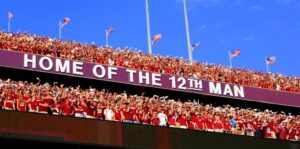
5 Ways to Earn Trust: The Ultimate Competitive Advantage
Are you looking for that leadership silver bullet that will propel you past the competition? You can take public speaking courses and enroll in an

Are you looking for that leadership silver bullet that will propel you past the competition? You can take public speaking courses and enroll in an

How would you describe your ideal employer? Here’s one factor that many job seekers overlook — but it has potential to make all the difference.

Are you selling products to a market? Or are you investing in relationships that will lift your brand? Community counts.

What sets great employers apart? And what can other organizations learn from the best? Join a timely and important #TChat conversation this week

Engagement is the fruit of ongoing relationships and healthy workplace cultures. How can gamification help?
Leadership – it’s a loaded term. What components set great organizational leaders apart? It starts with meaning and purpose.
It may seem counter-intuitive, but the most effective leaders are often the most humble. If you aspire to leadership in your career, or you want to be a better leader – take note…